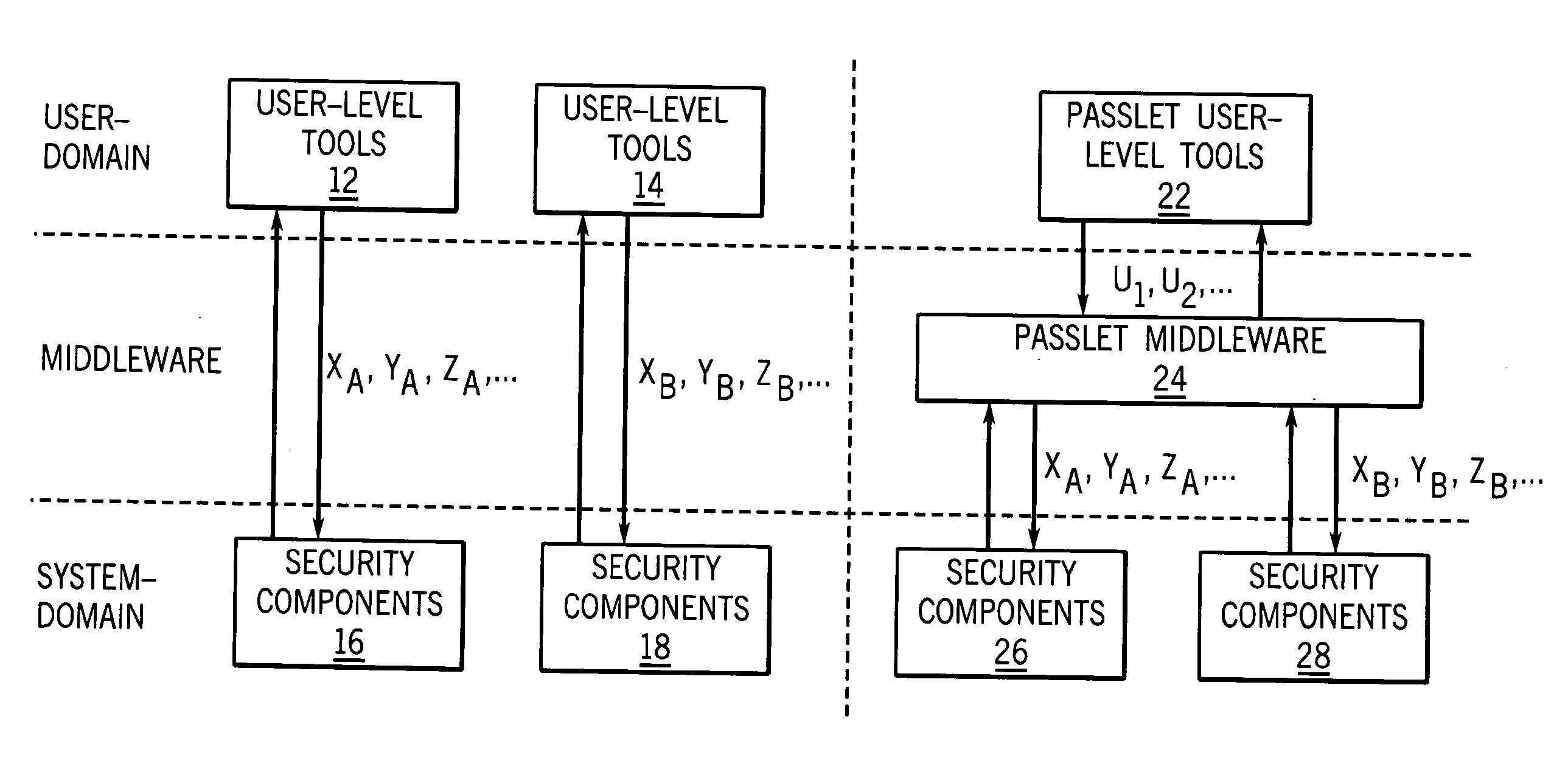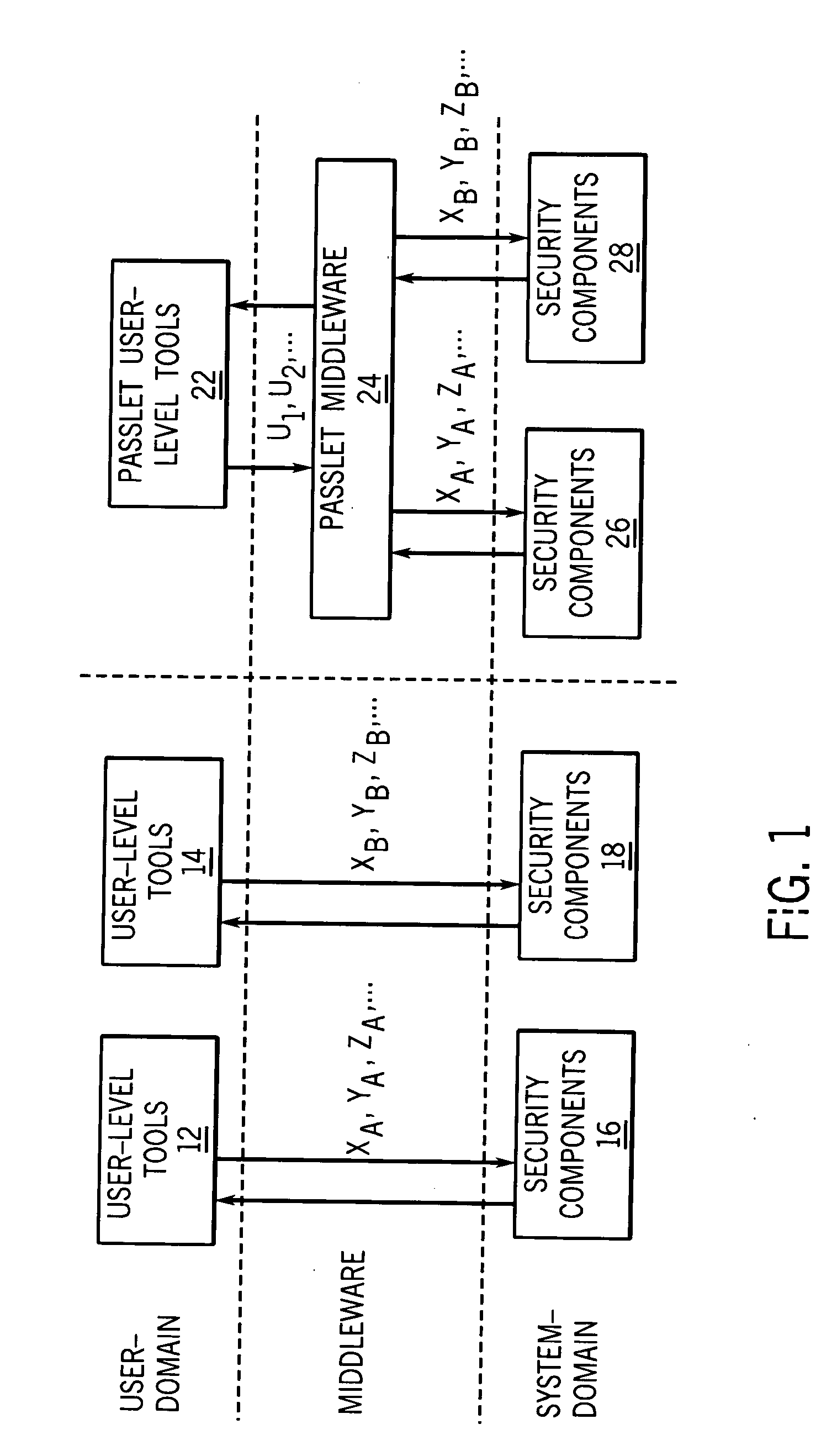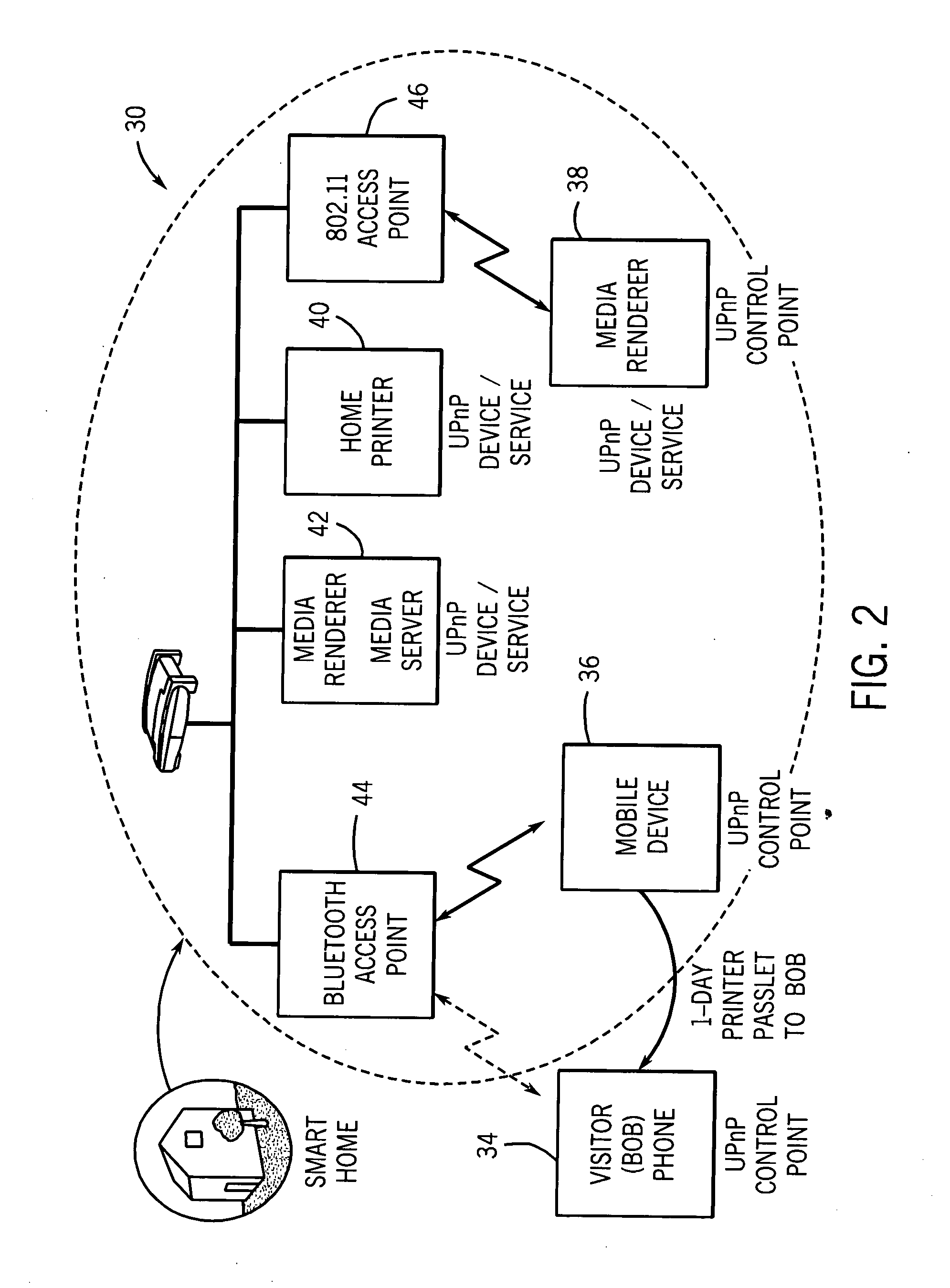Management of access control in wireless networks
a wireless network and access control technology, applied in the field of computer security, can solve the problems of exacerbate the problem of interacting with security, people are the weakest link in security, and computer users often find security intimidating or obstructing,
- Summary
- Abstract
- Description
- Claims
- Application Information
AI Technical Summary
Benefits of technology
Problems solved by technology
Method used
Image
Examples
Embodiment Construction
[0028]FIG. 1 illustrates a comparison of conventional user interaction to gain access control with granting access control using a passlet mechanism. The passlet mechanism provides an intuitive user interaction for access control, regardless of the underlying security framework. As such, non-expert users can manage access to devices in a smart-space, such as a DLNA-type smart home, without being exposed to the complexity of the underlying security infrastructure.
[0029] In a typical user interaction, the user domain includes user-level tools, such as tools 12 and tools 14, having security frameworks. Tools 12 can include security concepts XA,YA,ZA, such as 802.11 WEP keys, 802.11 AP SSID, MAC address ACL on the 802.11 AP, account user-name and password on a Media Server, and read rights on a directory. Tools 14 can include security concepts XB, YB, ZB, such as Bluetooth (BTH) Passkeys to pair with a BTH AP, PPP user account on the BTH AP, account user-name and password on a trusted ...
PUM
 Login to View More
Login to View More Abstract
Description
Claims
Application Information
 Login to View More
Login to View More - R&D
- Intellectual Property
- Life Sciences
- Materials
- Tech Scout
- Unparalleled Data Quality
- Higher Quality Content
- 60% Fewer Hallucinations
Browse by: Latest US Patents, China's latest patents, Technical Efficacy Thesaurus, Application Domain, Technology Topic, Popular Technical Reports.
© 2025 PatSnap. All rights reserved.Legal|Privacy policy|Modern Slavery Act Transparency Statement|Sitemap|About US| Contact US: help@patsnap.com



